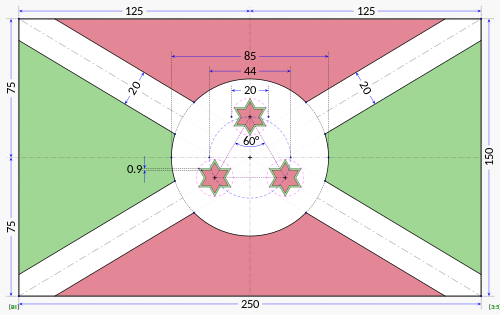 | |
| Use | National flag and ensign |
|---|---|
| Proportion | 3:5 |
| Adopted | 28 June 1967 (modified to current aspect ratio on 27 September 1982) |
| Design | A white diagonal cross divided into four panels of red (top and bottom) and green (hoist-side and fly-side) with the white disk superimposed at the center of the cross bearing three red six-pointed stars with green outlines arranged in the triangular form (one above, two below). |
| Designed by | Unknown |

The original national flag of Burundi (Kirundi: ibendera ry'Uburundi, French: Drapeau du Burundi) was adopted after the Burundian independence from Belgium on 1 July 1962. It went through several revisions and now consists of a white saltire which divides the field into alternating red and green areas. The center of the saltire merges into a white disk, on which there are three red solid six-pointed stars outlined in green. The current ratio is 3:5, [1] which was changed from 2:3 on 27 September 1982.








